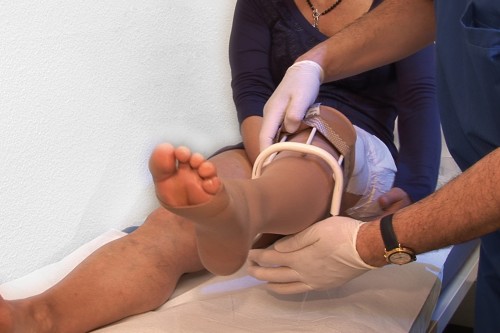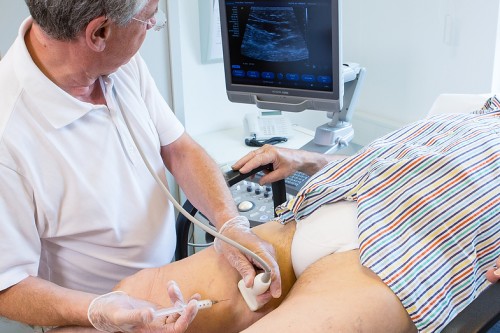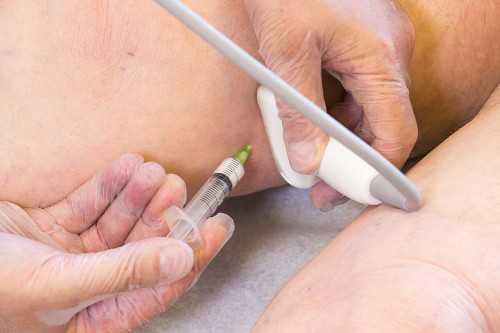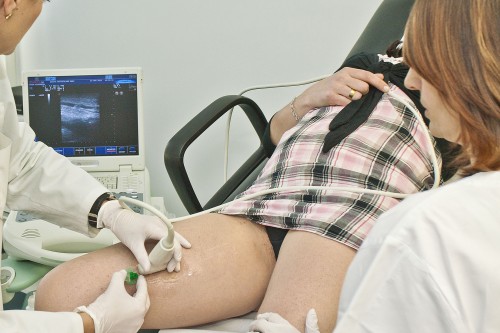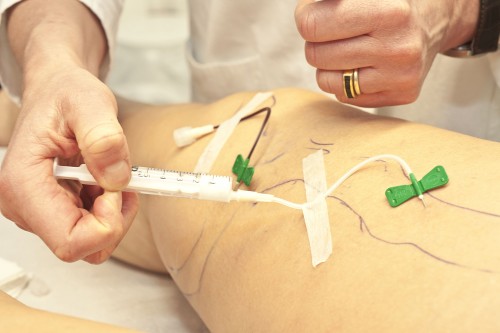Varicose veins can be effectively treated with foam sclerotherapy
Here you will learn how foam sclerotherapy is carried out

How foam sclerotherapy is carried out
You can, in principle, have treatment at any time of the year, but as you have to avoid sunbathing for some weeks after treatment, most people have treatment between October and May. As for all methods of treatment, it is best not to start just before going away on holiday; treatment sessions should be completed not less than 2-3 weeks before going on a longer trip.
After a thorough examination and diagnosis, which is a decisive factor for treatment success, your doctor will draw up an individual treatment plan for you, explain exactly how treatment will be carried out, and provide information on the possible risks and chances of success.
The area of skin to be treated will be disinfected before the injection.
Immediately before treatment, the doctor will use a syringe system to produce foam from the liquid sclerosant containing polidocanol (lauromacrogol 400). Foam sclerotherapy is performed with the patient lying down. An ultrasound scanner is held against the skin to identify the vein to be treated. The needle is pushed through the skin and into the vein under ultrasound guidance. The foam is injected under visual control, so that the subsequent distribution of the foam in the diseased vein can be observed and directed accurately.
Sclerotherapy is a minimally invasive and relatively painless method of treatment that does not require any anaesthesia. The small prick from the injection needle is the only thing that can be felt, sometimes followed by a brief burning sensation as the sclerosant successfully attacks the walls of the affected veins.
Immediately after the injection, you will have to remain lying quietly for a few minutes before compression bandages or compression stockings are applied.
Compression therapy is usually applied for 2-4 weeks, depending on the severity of the varicose veins. The compression holds the walls of the vein together and facilitates their permanent adhesion.
As a rule, you will have to come back for a check-up 1-2 weeks after treatment. More than one treatment session may be needed, depending on the severity and extent of the varicose veins. An individual session does not usually last more than 30 minutes.
Various techniques of foam sclerotherapy
Foam sclerotherapy can be carried out as described above using either a simple needle or a butterfly needle – a small diameter short needle attached to a thin, flexible tube – which remains in the vein during treatment and is used for the intravenous administration of the sclerosant.
Some doctors use longer catheters (tubes) for foam sclerotherapy of the trunk veins. ClariVein® is one such catheter system. With this system, a rotating catheter tip damages the vein mechanically before the liquid sclerosant is injected. The combination is intended to make treatment even more effective and to also give good results when using liquid sclerosant in larger veins. One disadvantage of the system is its relatively high price.

